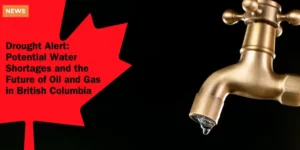Plumbing Poverty Crisis: Why 1.4 Million Americans Still Lack Basic Running Water
Anúncios
Introduction to Plumbing Poverty
Over one million Americans currently face a troubling issue often overlooked: lack of running water in their homes.
This dire situation, known as “plumbing poverty,” has traditionally been associated with rural areas.
Anúncios
However, recent studies, such as the one published in Nature Cities, reveal that this problem is increasingly prevalent in major urban centers, including cities like Portland, Phoenix, Houston, and New York.
Rising Urban Crisis
Living without running water means households suffer from severe limitations in performing daily activities, such as cooking, cleaning, and personal hygiene.
Anúncios
It’s an urgent issue that reflects broader socio-economic disparities.
Urban centers, once thought to be largely immune to such fundamental problems, now reveal startling insights about inequality and infrastructure failure.
New York, despite noticeable improvements since 2000, still has around 24,700 households struggling with limited access to running water.
Meanwhile, Phoenix and San Francisco have shown minimal progress, with the situation in Portland worsening over recent years.
Evolving Nature of Plumbing Poverty
Several factors contribute to this growing crisis in cities.
Rising housing costs combined with stagnant wages mean that more individuals and families are forced to make impossible choices, such as paying rent over their water bills.
This financial strain leads many into “plumbing poverty,” where they might live in homes with broken fixtures or substandard conditions that make it difficult to maintain a reliable water supply.
Another concern is that these figures likely underestimate the real scope of the problem.
Populations such as the homeless are not adequately represented in census data, making it challenging to grasp the full impact.
Moreover, communities of color are disproportionately affected by this scarcity, further highlighting deep-rooted inequities within urban settings USA Today.
From Rural to Urban
The shift from rural to urban plumbing poverty underscores the broader challenges posed by the cost-of-living crisis.
The study highlighted that unaffordable housing and rising living expenses are pushing more households into precarious living conditions where even basic necessities like water become inaccessible.
Addressing plumbing poverty requires a multi-faceted approach that encompasses comprehensive housing policy reforms and overhauling social infrastructures.
These changes are crucial in ensuring equitable access to all citizens, regardless of their geographic location or socioeconomic status.
The journey to resolve plumbing poverty is long and complex, but recognizing the problem and understanding its various facets is the first step toward meaningful change.
Root Causes
The escalating crisis of plumbing poverty in urban America is multifaceted, driven by a combination of rising housing costs, stagnant wages, and substandard living conditions.
Here, we delve into the various dimensions of this critical issue.
 This is a problem with many causes
This is a problem with many causes
Economic Pressures
One of the primary drivers of plumbing poverty is the increasing cost of housing juxtaposed against stagnant wages.
As highlighted by a study in the journal Nature Cities, Americans are being “squeezed” financially due to mounting costs for basic needs like housing, utilities, food, and healthcare.
This economic strain forces many individuals and families to make tough choices between essential expenses.
When the rent is due, and the paycheck doesn’t stretch far enough, paying the water bill often falls by the wayside USA Today.
Prioritizing Rent Over Utilities
Housing is a non-negotiable expense, and when wages don’t keep pace with the rising cost of living, rent often takes precedence over other bills.
In many cases, families are left with no choice but to forgo paying their water bills, leading to service shut-offs.
The situation is exacerbated by the fact that, even when water services are disrupted, rent must still be paid to avoid eviction USA Today.
Substandard Housing Conditions
Another significant contributor to plumbing poverty is the prevalence of broken fixtures and inadequate housing.
Many urban dwellings, particularly those available to low-income populations, suffer from poor maintenance.
Issues like broken pipes, clogged plumbing, and outdated water systems are common.
These problems are often expensive to fix, and landlords may neglect repairs, leaving tenants without reliable access to running water.
Additionally, some individuals may be living in unconventional housing units such as warehouses or makeshift shelters, which are not equipped with proper plumbing USA Today.
Intersection of Housing and Water Crises
As lead researcher Katie Meehan from King’s College London aptly puts it, “The housing crisis is a water crisis” USA Today.
The interrelated nature of these crises underscores the depth of the problem.
Addressing plumbing poverty requires us to look beyond the surface and consider the broader socio-economic challenges that disproportionately impact low-income and marginalized communities.
Moving forward, understanding the demographic aspects and the inadequacies in how we measure and address plumbing poverty will be crucial steps in developing effective solutions.
Scope and Demographics
The depth of plumbing poverty in America is often underestimated.
The figure of 1.1 million Americans without running water in their homes, documented as of 2021, likely falls short of the actual number affected.
This data, derived from U.S. Census results, may not adequately capture the complete picture.
The Invisible Population
One major group often excluded from these statistics is the homeless population.
As census data primarily focuses on households, it generally misses individuals and families without a fixed address.
This results in a significant underestimation of those experiencing plumbing poverty.
According to USA TODAY, the actual number of people without access to running water could be nearly double the reported figure.
Disproportionate Impact on Communities of Color
Another critical factor to consider is the disproportionate impact on communities of color.
These communities may experience higher rates of plumbing poverty due to systemic social and economic inequities.
The lack of representation in census data can further obscure the true extent of the problem, leaving marginalized groups underrepresented.
People in these communities might also hesitate to report their lack of water access due to stigma or mistrust of government agencies, thus contributing to the undercount.
Limitations of Census Data
Even among homeowners and renters, underreporting can lead to conservative estimates.
Many people may avoid admitting to living without running water, fearing social repercussions or further scrutiny.
The possibility of damaged fixtures or homes without proper maintenance means some households could still technically be connected to water services but effectively lack reliable access.
This reality is echoed in a study emphasized by Nature Cities, highlighting the struggles of people prioritizing rent payments over important utilities.
The insights from New York’s progress underscore this issue.
Despite improving conditions since 2000, the city still reported 24,700 households without running water as of 2021.
This statistic reflects a tangible yet incomplete resolution of the problem, particularly when compared to cities like Phoenix and San Francisco, where improvements have been minimal, and Portland, where conditions have worsened.
Given the complexity and multifaceted nature of plumbing poverty, it’s clear that the available data only provides a glimpse into the actual crisis.
Confronting this issue will require rigorous new data collection efforts and a willingness to listen to affected populations.
Addressing these challenges will ultimately involve more than just numerical adjustments—it will necessitate a broader acknowledgment of the underlying socio-economic factors at play.
Understanding these dynamics is crucial as we consider the potential solutions and reforms needed to combat plumbing poverty effectively.
Urban Impact Analysis
New York: Progress Amid Continued Struggles
Despite the gravity of plumbing poverty across the United States, New York City has demonstrated notable progress over the past two decades.
In 2000, the city’s dire situation saw an alarming 158,000 residents living without access to running water.
Fast forward to 2021, and that number has dramatically decreased to an estimated 24,700 households or about 56,900 people.
This improvement highlights some successful initiatives, yet it’s important to acknowledge that tens of thousands still struggle with basic water access issues.
Phoenix and San Francisco: Stagnation in Progress
Cities like Phoenix and San Francisco tell a different story.
These metropolitan areas have made little to no headway in mitigating their plumbing poverty crises.
Despite being wealthy, economically bustling cities, significant portions of their populations remain deprived of dependable running water.
The reasons remain stubbornly consistent: high living costs, stagnant wages, and systemic socio-economic disparities.
Portland: A Worsening Crisis
Portland, Oregon, is experiencing an exacerbating plumbing poverty issue.
The city, recognized for its high quality of life and progressive policies, now finds itself grappling with increasing numbers of residents lacking vital water access.
Housing costs in Portland have surged, outpacing wage growth and compelling families to make the untenable choice between shelter and essential utilities.
The city’s conditions have deteriorated noticeably, as more people face challenging living conditions.
Identifying Patterns and Moving Forward
The comparison of these cities highlights the complex interplay of local policies, economic conditions, and demographic factors contributing to the uneven progress in addressing plumbing poverty.
The struggles in cities like Phoenix, San Francisco, and Portland underscore the persistent and multifaceted nature of this crisis.
Effective solutions require targeted and comprehensive reforms.
Tackling the root causes of economic hardship and radically transforming housing and social infrastructure are essential steps in ensuring every American has access to running water.
Moving forward, the focus will remain on developing a holistic understanding of these issues and advocating for equitable measures to alleviate the burden on affected communities.
Proposed Solutions
Addressing the crisis of plumbing poverty in urban America requires a multifaceted approach, targeting the underlying socio-economic issues and transforming how we think about housing and infrastructure.
Comprehensive Housing Policy Reforms
First and foremost, there is an urgent need for comprehensive housing policy reforms.
Current housing policies often fail to protect low-income households from exorbitant rent increases and poor living conditions.
Governments at all levels must implement policies that provide rent control and ensure affordable housing.
This could involve increasing funding for public housing projects, providing subsidies to low-income renters, and preventing landlord exploitation through stricter regulations and tenant protections.
Transformation of Social Infrastructures
Equally important is the transformation of social infrastructures to support vulnerable communities.
Access to affordable water should be a basic right, not a privilege dependent on where you live or how much you earn.
One solution is to invest in the modernization and maintenance of water supply systems to ensure reliability and safety.
This also means addressing broken fixtures and outdated plumbing systems in substandard housing.
Public works projects can be employed to upgrade the aging infrastructure in cities where plumbing poverty is most acute.
Additionally, financial assistance programs should be expanded to help those struggling to pay their water bills, preventing them from having to make the impossible choice between rent and utilities.
Addressing Broader Socio-Economic Disparities
To make any meaningful progress, it is vital to address the broader socio-economic disparities that contribute to plumbing poverty.
The crisis is not merely about the lack of water; it is a symptom of larger issues such as income inequality, stagnant wages, and the housing affordability crisis.
Policymakers should look into implementing a living wage, creating job training programs, and providing better access to healthcare and education to break the cycle of poverty.
Community-led initiatives can also play a significant role.
By empowering local organizations and residents, cities can create tailored solutions that address the unique needs of their communities.
For instance, community health workers can be trained to identify and assist households without running water, connecting them with the necessary resources and support services.
In conclusion, tackling plumbing poverty requires a holistic and multi-dimensional strategy.
Only through comprehensive housing reforms, infrastructure upgrades, and by addressing the socio-economic factors at the root of the problem can we hope to ensure that every American has access to this most basic and essential resource.







